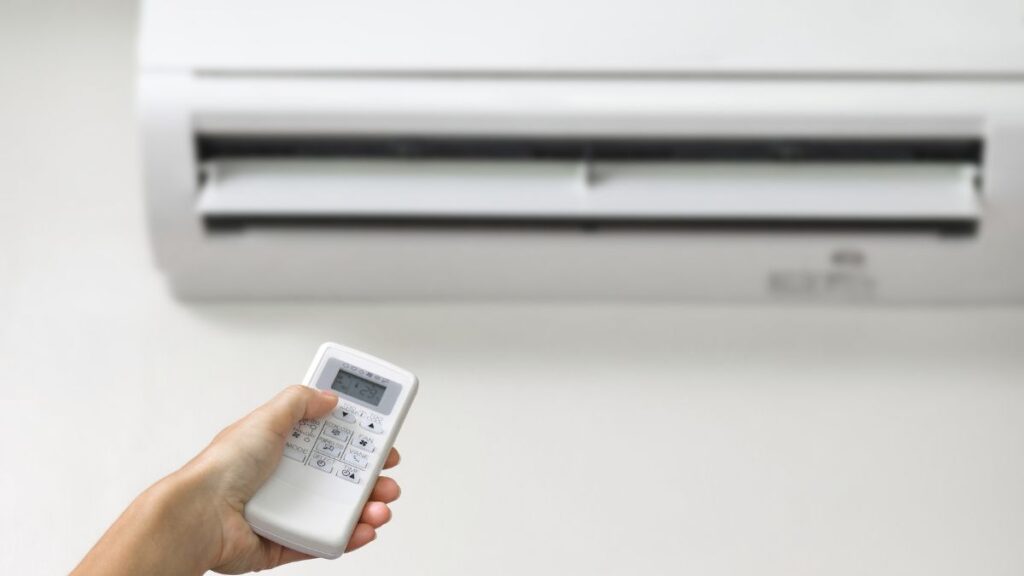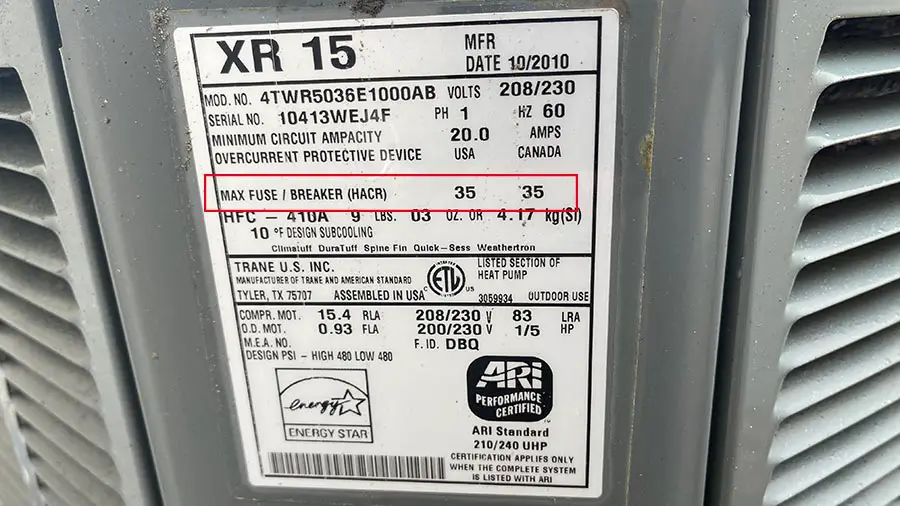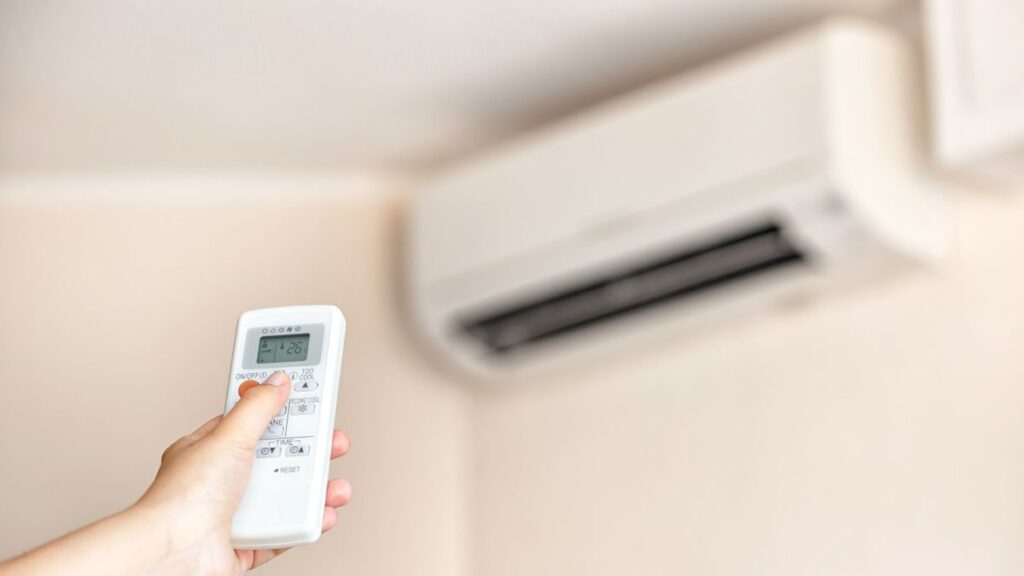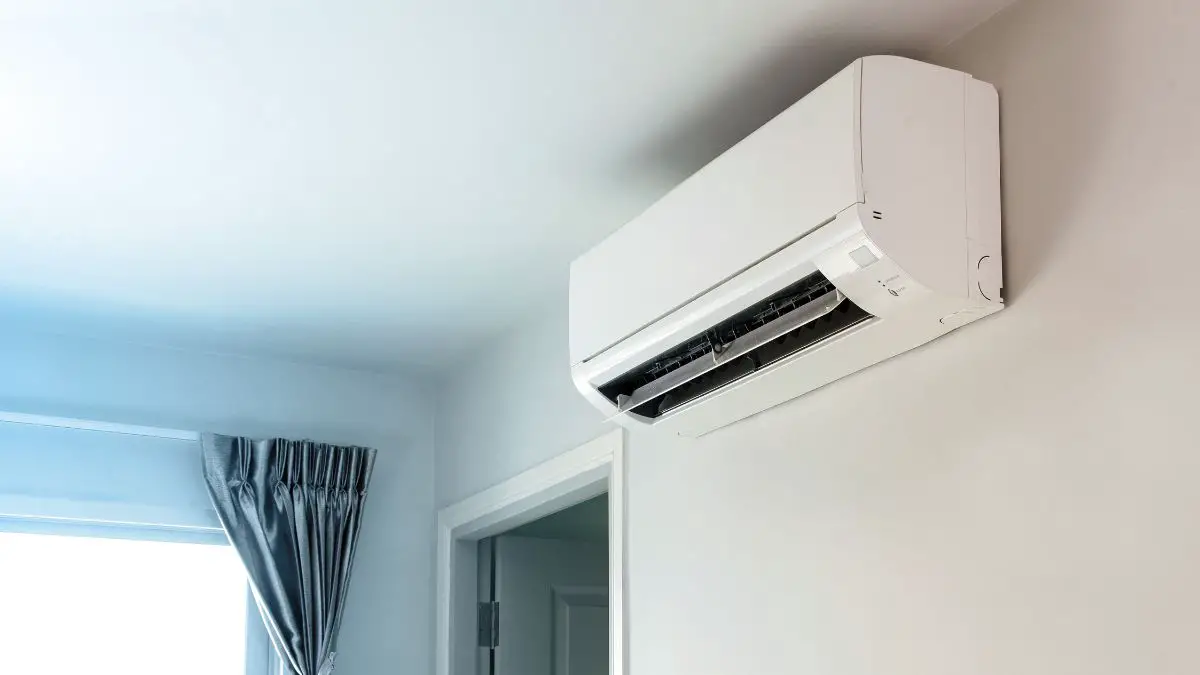Planning for the energy consumption of a new air conditioner (AC) or heat pump can seem daunting, especially when faced with technical jargon. But let’s break it down and answer the question: How many amps do air conditioners use?
On average, an outdoor condenser unit, whether it’s a heat pump or an air conditioner, uses between 9 to 13 amps. To be precise, it’s around 9.6 amps. The number of amps varies because it depends on the model and tonnage of the unit. Smaller units will naturally use fewer amps than larger ones.
When it comes to voltage, the numbers are more consistent. You’re looking at about 208 volts on the lower end and 230 volts on the high end. Modern residential service comes in at 240 volts, with a voltage drop not going lower than 233 volts. So, when planning for your new AC or heat pump, these are the numbers you need to keep in mind.
So, are you ready to become an air conditioner power consumption expert? Let’s dive in!

Grasping the Power Consumption of Your Air Conditioner
Amps: The Flow of Electrical Charge
Let’s start with ‘Amps.’ Short for Amperes, Amps measure the flow of electrical charge. Think of it as the amount of electricity that flows through the wires when your air conditioner is running.
The higher the Amps, the more electricity your air conditioner uses, and it’s crucial to understand how much electricity your air conditioner consumes.
Volts: The Driving Force of Electricity
Next up is ‘Volts.’ Volts represent the electrical force or ‘pressure’ that pushes Amps through the wires. In simpler terms, if Amps are the quantity of electricity, Volts are the force driving that electricity.
Your air conditioner’s voltage rating, typically 120V or 240V, can significantly impact its power consumption and, consequently, your energy bills.
BTUs: Measuring Your Air Conditioner’s Cooling Capacity
Now, let’s talk about ‘BTUs.’ Standing for British Thermal Units, BTUs measure your air conditioner’s cooling capacity.
One BTU represents the energy needed to raise the temperature of one pound of water by one degree Fahrenheit. In air conditioning, it’s used to describe how much heat your air conditioner can remove from a room in one hour.
A higher BTU rating means more cooling power but also more electricity usage.
Tonnage: The Size of Your Air Conditioner
Lastly, we have ‘Tonnage.’ In the context of air conditioning, Tonnage doesn’t refer to weight. Instead, it describes the cooling capacity of your air conditioner. One ton of air conditioning can cool 12,000 BTUs in an hour.
So, a 2-ton air conditioner can cool 24,000 BTUs in an hour, and so on. The larger the Tonnage, the more powerful the air conditioner, and the more electricity it uses.
Measuring Your Air Conditioner’s Power Consumption
Understanding how electrical power consumption is measured in air conditioners is key to managing your energy usage effectively. It’s not as complex as it might seem.
Your air conditioner’s power consumption is essentially the product of its Amperage rating (electricity flow) and Volts (electricity pressure). This is often expressed in Watts.
For example, if your air conditioner operates at 15 Amps and 120 Volts, its power consumption would be 1,800 Watts (15 Amps x 120 Volts). Knowing this, you can estimate how much electricity your air conditioner uses when running, helping you anticipate your energy costs and manage your usage more effectively.
By understanding these terms and how they relate to your air conditioner’s power consumption, you’re taking a significant step towards managing your energy usage and controlling your electricity costs.
Knowing your air conditioner’s power consumption can help you make informed decisions about your home’s energy management.

How Many Amps Do Air Conditioners or Heat Pump Use?
Let’s clarify the amp requirements for your heat pump or AC. Let’s say you have a 2.5-ton AC pull on your heat pump. Since heat pumps are generally less energy-efficient than ACs, the smallest ampacity you can expect is about 19 amps. The smallest fuse size available is 25.
Don’t forget to consider the indoor unit and the amps it generates. A safe estimate is between 3 to 5 amps. So, a 2.5-ton central air conditioner or heat pump condenser might require about 30 amps.
Remember, the air conditioner brand and energy consumption settings can affect energy efficiency, so there might be more flexibility than you think. More importantly, ensure that your heat pump is large enough to heat or cool all the rooms in your home effectively.
Amp Requirements for a 5-Ton Condensing Unit
Heating or cooling a large space is a significant task. A 5-ton heat pump can cover over 3,000 sq ft in warmer climates and about 3,700 in more moderate ones. So, how many amps does such a unit require?
First, consider how many BTUs of cooling power the unit generates. A typical 5-ton heat pump generates about 60,000 BTU. This means it will produce about as much as a 5-ton AC, which generates between 4,000 and 8,000 watts.
Assuming a 5-ton heat pump requires 6,000 watts to run on a 240-volt dedicated circuit, you can calculate the amps by dividing the watts by the volts, which gives you 26.1 amps. This is an average estimate, and other factors can influence this number.
If these calculations seem complex, it might be wise to seek professional guidance. It might cost more, but it’s better than risking an incorrect estimate or a potential fire hazard by attempting to install the unit yourself.
Determining the Breaker Size
The size of your breaker depends on the amp demand of your heat pump. For a 4 or 5-ton heat pump, you’ll need an electrical circuit breaker rated 45-50 A, connected with an 8-10 AWG wire, especially if your heat pump produces between 197 to 253 volts.
This isn’t a DIY project. You’ll need professional advice to determine the correct sizes to meet your needs and comply with regulations. In most cases, you’ll need to prove that you’re a licensed professional qualified to install new HVAC systems.
Choosing the Right Generator for a 5-Ton AC Unit
You’ve got a 5-ton AC unit, which typically generates around 6,000 watts of electric power. So, when it comes to choosing a generator, you’ll want one that can handle about 7,000 watts of power. Why? Because you need to account for the start-up electrical requirements.
Choosing a generator with this capacity ensures that your AC unit will always have enough power. It won’t exceed that initial start-up requirement, so you can rest easy knowing your AC unit will run smoothly.
Amp Requirements for a 2-Ton Condensing Unit
Let’s dive into the amp requirements for a 2-ton heat pump. This unit typically generates around 24,000 BTU, translating to about 2,800 watts of power.
If you’re working with a standard 210 unit, you’ll need roughly 13 amps as a base. But remember, you also need to account for your indoor unit and the usual variations from model to model.
Choosing the Right Amp Breaker
The size of the amp breaker you’ll need can vary significantly, depending on the specific heat pump you choose and other factors we’ve discussed. It’s always a good idea to consult a licensed electrician or HVAC contractor to determine the appropriate breaker size.
If you’re replacing a circuit breaker for an older air conditioner, check the breaker size in the breaker panel. As technology progresses, newer systems of the same tonnage often require a smaller breaker amp size.
For instance, a newer 3-ton air conditioning unit might need a max breaker of 35 amps, while your older unit could have required a 40 amp breaker.
A 2-ton heat pump could typically use a 30 amp breaker and 10 amp wire. But for the best and safest results, consult an electrician. This ensures your safety and protects your home.

Factors Influencing Your Air Conditioner’s Amp Usage
Several factors come into play, and each one can significantly impact the overall energy usage. Let’s examine the factors to help you effectively manage your air conditioner’s power consumption.
Size Matters: The Role of Your Air Conditioner’s Size
The size of your air conditioner, often called its ‘Tonnage,’ plays a crucial role in determining its Amp usage. Larger air conditioners have a higher cooling capacity, measured in BTUs. They can cool a larger area but also consume more electricity.
Think of it this way: a small, 1-ton air conditioner might be perfect for a small bedroom, using a relatively low number of Amps. But you might need a 3-ton air conditioner for a large living room, which will use significantly more Amps.
So, when considering the size of your air conditioner, remember that bigger isn’t always better. It’s about finding the right size for your specific needs.
Efficiency Counts: The Impact of SEER Rating
The efficiency of your air conditioner, represented by its Seasonal Energy Efficiency Ratio (SEER), also influences its Amp usage. The SEER2 rating tells you how much cooling your air conditioner can provide per unit of electricity it consumes.
A higher SEER rating means your air conditioner can provide more cooling using less electricity. It’s like getting more bang for your buck. So, while a high-efficiency air conditioner might have a higher upfront cost, it can lead to lower electricity bills in the long run.
Type of Air Conditioner: Central, Window, or Portable
Lastly, the type of air conditioner you have can also affect its Amp usage. Central air conditioners, window units, and portable air conditioners have different power consumption patterns.
- Central Air Conditioners: These systems are powerful and efficient, ideal for cooling entire homes or large spaces. However, they also consume more electricity and thus have higher Amp usage.
- Window Air Conditioners: These units are typically used to cool individual rooms. They’re less powerful than central systems, resulting in lower Amp usage.
- Portable Air Conditioners: These are the most flexible option, allowing you to move the unit from room to room as needed. Their Amp usage falls somewhere between central and window units.
Understanding these factors can help you effectively manage your air conditioner’s power consumption. It’s about making informed decisions, whether you’re choosing a new air conditioner or looking to reduce your electrical current system’s energy usage.

Calculating Your Air Conditioner’s Amp Usage: A Step-by-Step Guide
Calculating your air conditioner’s Amp usage can be incredibly beneficial. It lets you anticipate your energy costs and manage your usage more effectively. Here’s a simple, step-by-step guide to help you do just that.
Step 1: Identify Your Air Conditioner’s Wattage
The first step is to determine how many Watts your air conditioner uses. This information is usually listed on the air conditioner’s energy guide label or user manual. You can contact the manufacturer or search for your air conditioner model online if you can’t find it.
Step 2: Find Out Your Home’s Voltage
Next, you need to know the voltage of your home’s electrical system. In most homes, this is either 120 Volts or 240 Volts. If you’re unsure, you can check with a qualified electrician.
Step 3: Calculate the Amps
Now, it’s time to calculate the Amps. To do this, you divide the Wattage (from Step 1) by the Voltage (from Step 2). The result is the number of Amps your air conditioner uses.
For example, let’s say you have a window air conditioner that uses 1,200 Watts, and your home’s voltage is 120 Volts. The calculation would be 1,200 Watts ÷ 120 Volts = 10 Amps. So, your air conditioner uses 10 Amps.
Examples of Different Types and Sizes of Air Conditioners
Let’s look at a few examples to illustrate how the air conditioner size and type of air conditioner can affect Amp usage.
- Small Window Air Conditioner (6,000 BTUs): These units typically use around 500 Watts. So, if your home’s voltage is 120 Volts, the Amp usage would be 500 Watts ÷ 120 Volts = 4.17 Amps.
- Medium Window Air Conditioner (10,000 BTUs): These units usually use about 900 Watts. So, the Amp usage would be 900 Watts ÷ 120 Volts = 7.5 Amps.
- Large Central Air Conditioner (24,000 BTUs): These powerful systems can use up to 2,400 Watts. So, the Amp usage would be 2,400 Watts ÷ 240 Volts = 10 Amps.
Remember, these are just estimates. The actual Amp usage can vary based on factors like the air conditioner’s efficiency and how often it’s running. But by understanding how to calculate Amp usage, you can make more informed decisions about your air conditioner’s power consumption.
The Impact of Your Air Conditioner’s Amp Usage on Your Electricity Bill
Knowing how your air conditioner’s Amp usage affects your electricity bill can lead to significant savings. Let’s delve into how Amp usage translates to electricity cost and explore some practical tips to reduce your air conditioner’s power consumption.
Translating Amp Usage to Electricity Cost
Your air conditioner’s Amp usage directly impacts your electricity bill. The more amps your air conditioner uses, the higher your electricity cost. But how does this translation happen?
Electricity is typically billed in kilowatt-hours (kWh). One kilowatt-hour is equivalent to using 1,000 Watts for one hour. To calculate the kWh usage of your air conditioner, multiply its Wattage (which you can find by multiplying the Amps by the Voltage) by the number of hours it’s running and then divide by 1,000.
For example, if your air conditioner uses 1,200 Watts (or 1.2 kW) and runs 8 hours a day, it would use 9.6 kWh per day (1.2 kW x 8 hours). If your electricity rate is $0.12 per kWh, running your air conditioner would cost about $1.15 per day (9.6 kWh x $0.12).
Tips to Reduce Air Conditioner Power Consumption
Here are some practical tips for reducing your air conditioner’s power consumption:
- Maintain Your Air Conditioner: Regular maintenance can keep it running efficiently, reducing power consumption. This includes cleaning or replacing the filters, cleaning the coils, and checking for any issues affecting their performance.
- Use a Programmable Thermostat: A programmable thermostat can automatically adjust the temperature when you’re not home, reducing unnecessary cooling and saving electricity.
- Improve Your Home’s Insulation: Good insulation can keep the cool and hot air inside, reducing the need for constant cooling.
- Use Energy-Efficient Cooling Methods: Use ceiling fans, close curtains or blinds during the hottest part of the day, and use electrical appliances that generate heat (like an oven) less frequently.
You can effectively manage your energy costs by understanding the impact of your air conditioner’s Amp usage on your electricity bill and implementing these energy-saving tips.
FAQs About How Many Amps Do Air Conditioners Use
How many amps does a 220 air conditioner use?
The number of Amps a 220V air conditioner uses depends on its Wattage. You can calculate the Amps by dividing the Wattage by the Voltage. For example, if your 220V air conditioner uses 2,200 Watts, it would use 10 Amps (2,200 Watts ÷ 220 Volts).
How many amps is a 12000 BTU air conditioner?
A 12,000 BTU air conditioner typically uses between 5 to 7 Amps, depending on its efficiency and the voltage of your home’s electrical system. Remember, higher efficiency (a higher SEER rating) can lead to lower Amp usage.
How many amps does a 10000 BTU AC use?
A 10,000 BTU air conditioner usually uses between 4 to 6 Amps. Again, this can vary based on the air conditioner’s efficiency and your home’s voltage.
How many amps does a 5000 BTU air conditioner draw?
A 5,000 BTU air conditioner, often used for small rooms, typically uses between 3 to 4 Amps. As with larger units, this can vary based on the air conditioner’s efficiency and your home’s voltage.
Are mini split air conditioners efficient?
Yes, mini-split systems are very efficient, reduce energy consumption, and are up to 40% more efficient than standard central air conditioning systems. They have adjustable fan speeds so you can choose the right setting for your cooling needs, making them even more energy-efficient.
Final Thoughts
Understanding your air conditioner’s power consumption is essential for saving money on electric bills. Key terms such as Amps, Volts, BTUs, and Tonnage are vital in understanding how your air conditioner consumes energy.
Managing your air conditioner’s power consumption allows you to anticipate energy costs, reduce unnecessary energy usage, and contribute to energy conservation efforts. You can control your air conditioner’s power consumption and effectively manage energy costs.







